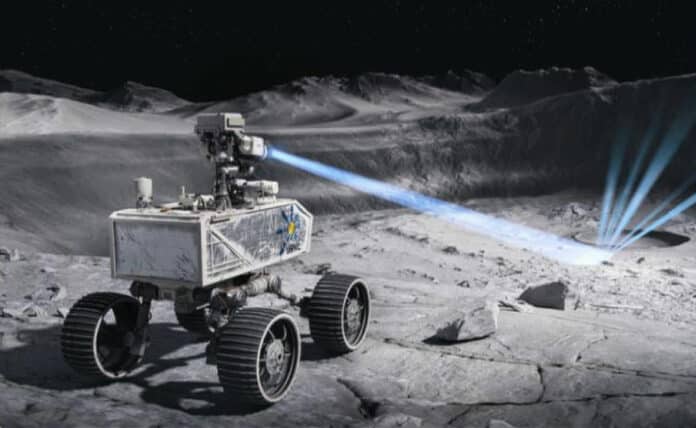There are many interesting places on the moon that scientists would like to explore in as much detail as possible. Unfortunately, it is often difficult to reach them – as the surrounding surface is too uneven or in the darker region. In such cases, the ability to study formations from a distance would be very useful.
A flashlight can be used to see in the dark regions of the moon to better understand what those areas are composed of. Such a new project recently received funding from a NASA Institute for Advanced Concepts (NIAC) Phase I award.
The new “EmberCore Flashlight” doesn’t emit visible light but uses a shorter wavelength of light, an x-ray, and a gamma-ray to find resources on the Moon. The innovative technology is the EmberCore radioisotope being developed by Ultra Safe Nuclear Corporation (USNC) to enable lunar night survival by keeping lunar rovers and landers warm through the cold lunar night.
EmberCore is a nuclear chargeable ceramic (NCC) that produces heat and x-rays without the need for externally applied power. It is composed of individual “embers” made from a family of commercially available, inert isotopes charged with neutrons in a nuclear reactor. The isotopes and their charging levels can be adjusted, as so can the energy output: thermal, electrical, or X-ray.
The technology is still being tested, but NASA saw its potential. By slightly modifying EmberCore, the x-ray and gamma-ray flashlight mounted on some kind of rover can be produced, which would have a beam strength orders of magnitude greater than what has been previously deployed in space. This intensity provides a significant source of light that will be able to travel over many kilometers, interact with the ground, and then bounce back toward a special sensor.
The signal that is returned to the sensor is like a fingerprint that can be used to identify substances such as water. Because the flashlight uses X- and gamma rays that penetrate the surface, information will be revealed about not just the surface but what lies beneath the surface.
Although the project is still in its early stages, Christopher Morrison from the Ultra Safe Nuclear Corporation is already thinking about two locations that are perfect for testing the technology. One location is Shackleton Crater – a 21 km wide crater with the potential for significant amounts of water and other volatiles. A rover located at the rim or inside of the crater can shine its flashlight at different locations. The response signal can then be detected, and the composition of the location be determined.
The second location of interest is Mare Tranquillitatis, where 10s of meters of exposed bedrock is exposed in steep pits. A gamma/x-ray flashlight can illuminate various strata that reveal their elemental composition at a standoff distance – without needing to traverse the pits. Such data can reveal significant detail about the geological formation of the lunar crust and volcanic history.
This flashlight technology could be used on any airless body and could be just as impactful for operations on asteroids, small moons, and Mercury.
